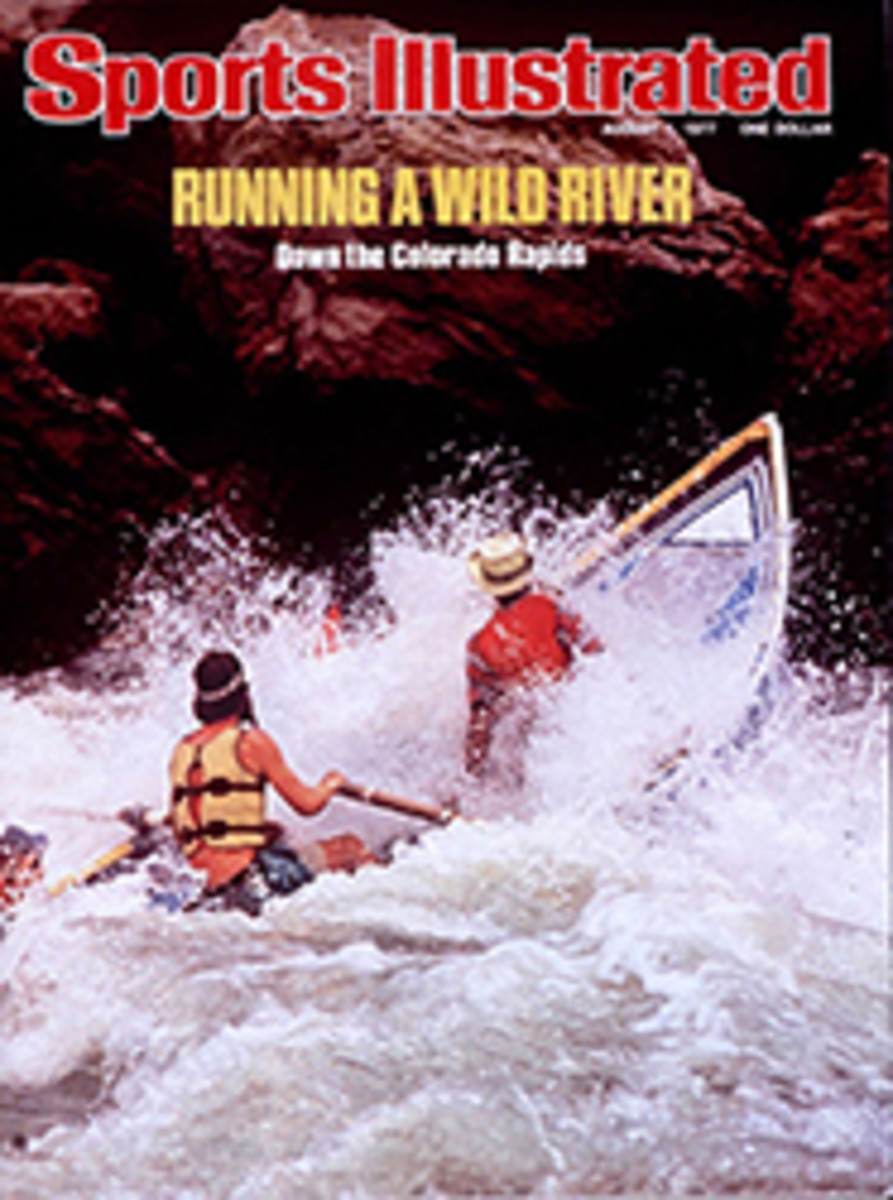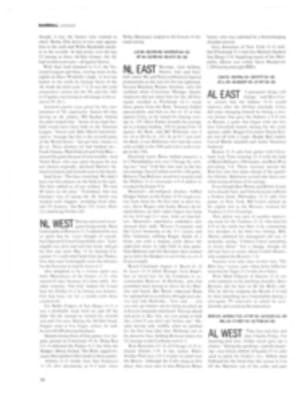
No flinching allowed
All the immortals of drag boat racing are dead, man. Extremely dead. Funny how they never call a guy an immortal until after he's, you know, had his lights put out. O.K., not funny. Sad, man, very sad. But isn't that the way of all sports? Cooperstown and Canton and Springfield—ghosts on index cards, filed and set aside. The thing is, when you go to the drag boat races you never know whether—or when—somebody is going to immortalize himself before your very eyes. Drag boat racing is the sport of the hereafter that is here and now Biers on tap.
The idea of drag racing in powerboats—two boats head to head over a straight quarter-mile course—got its first real test in 1956 on Lake Ming, a shiny tonsure of water in the foothills of the Sierras near Bakersfield, Calif. Since then 19 drivers have died on Lake Ming, dozens more on other watery venues across the country. Because of the sport's seeming insouciance about death, it quite naturally exerts a tidal pull on spectators with a high tolerance for beer, sun, beer, noise, beer and an occasional fatality. Madame Defarge knitted; nowadays, fun seekers can go to drag boat races.
At a drag boat gathering, watching the races is oftentimes a concession to a lack of ingenuity, so varied and intense is the action ashore. Like baseball, drag boat racing may be defined by its interludes of inactivity; the races themselves are but a brief noisy punctuation to the afternoon's indolence.
There are 10 different classes of boats, a caste system determined by the type of hull configuration, the power of the engine and the kind of fuel used. The fastest of these boats, the blown (supercharged) fuel hydros, are capable of speeds in excess of 200 mph at the end of a quarter mile. Unlike their landlubbing dragster counterparts, drag boats cannot execute a standing start but must idle up to the starting lights. So powerful is the torque created by the propeller that a standing start would cause the hulls to rise straight up out of the water and flip over.
There are many similarities between drag boating and drag racing, but the resemblance does not include prize money. Four-wheeled drag racing has become a fairly profitable enterprise for its drivers through the accumulation of lucrative sponsorships, but drag boating has few sponsors and one of the most niggardly prize structures in all of sport. Teams that have as much as $50,000 tied up in equipment think nothing of spending a weekend racing for a purse of less than $1,000. "It's a hobby for people with a lot of money to spend," says driver Dennis (Godfather) Pollaccia. Pollaccia, a Southern Californian who competes in the blown-fuel hydro division, claims to be one of the few who make a living from piloting drag boats.
Many of the drivers have little more to recommend them for the task of handling a 2,000-hp boat than an abundance of nerve. Often they sit on the shoreline and wait to be asked to drive. The results can be harrowing. Even for an experienced driver like Pollaccia, some kind of disaster seems almost inevitable. In 1974 he crashed a blown-fuel hydro and went flying over the bow while the boat disintegrated beneath him. "I went through the timing lights at 170 miles an hour," Pollaccia recalls. "Me, The boat was going 190."
Gary Gabelich, who holds the world land-speed record of 631.367 mph, was the first man to surpass 200 mph in a drag boat. He did it in 1969; nine other drivers have gone 200 since Gabelich. Boat News, the sport's biweekly bible, recently celebrated these 10 in a photo gallery. Significantly, two of the pictures for the feature were taken moments before the boats crashed. One of the drivers, the immortal Mac Christensen, was killed in an accident three years ago.
It takes so very little to get a drag boat airborne that it is surprising it doesn't happen more often. A small wave will do it. Once the hull goes up, the only way back down is in little pieces. "At 205 miles an hour," says hull builder Ralph DiMarco, "water has the density of concrete. It's like trying to run your boat down the driveway."
The most treacherous of these boats is the blown-fuel flat bottom, which combines a potent nitromethane-burning engine with a flat hull. Unlike the hydro hulls, which allow air to escape from beneath them, flatbottoms "pack" air under their hulls. That is, a bubble of air builds under the boat, raising the front half of the hull out of the water. Sometimes, at 160 mph or more, the bubble bursts. This is known in drag boating parlance as a "destructive accident." You bet it is. Veteran flatbottom driver Al Bush had three destructive accidents in one year. He has weighed this evidence, considered the danger and decided to ignore it. "We're going too fast in these flatbottoms," Bush says, strapping himself into his boat. "Way too fast."
Equally dangerous in its own way is the jet drag boat, which is powered by a stream of water instead of a propeller. The water intake scoop is near the middle of the hull, so that when the bow rises too far out of the water the scoop begins sucking wind and the boat loses power. When that happens, the ability of its driver to steer it also vanishes. Last May a jet-powered drag boat, driven by Houston Oiler Quarterback Dan Pastorini, lost power and went careening out of control on Lake Mizzel in Liberty, Texas. As spectators on the shoreline watched, the boat veered toward land and ripped through the crowd. A 13-year-old girl was killed and six other persons were injured. Pastorini, who was unhurt, has quit his drag boat career.
When boat and driver make it from start to finish in one piece, it is a breathtaking sight to behold. A blown-fuel hydro covers the quarter mile in about seven seconds and generates such fearsome power that the water from its rooster tail often reaches the height of a four-story building, the spray at the starting line just beginning to melt back into the lake as the boat flashes across the finish.
"Everything happens so suddenly," says Mike Stevens, the driver of a blown-fuel hydro called Blood, Sweat & Nitro. "Sometimes I'll be sitting in the boat when everything has calmed down after the race and realize that I'm holding my breath. I actually have to remind myself to breathe."
One time Stevens' head was snapped straight back by the wind at 190 mph and began bobbing around so that he looked like one of those spring-necked dolls that people put in the back window of their cars. Stevens somehow managed to finish the race without killing himself but he didn't regain control of his head until he had shut off his engine. Another time he saw a small fish jump out of the water about 100 yards in front of him, and was on the fish before it was back in the water. "That's why I wear a face mask now." Stevens says. "At 190 miles an hour a drop of water could penetrate your face. I could see the water from the fish coming at me, but I didn't have time to flinch."
That is the kind of stuff that many drag boat racing fans like to hear: water penetrating someone's face, a man's head flopping around like laundry in the breeze. Like the sport's daredevil drivers, drag boating fans, it would seem, haven't flinched yet.
PHOTO

